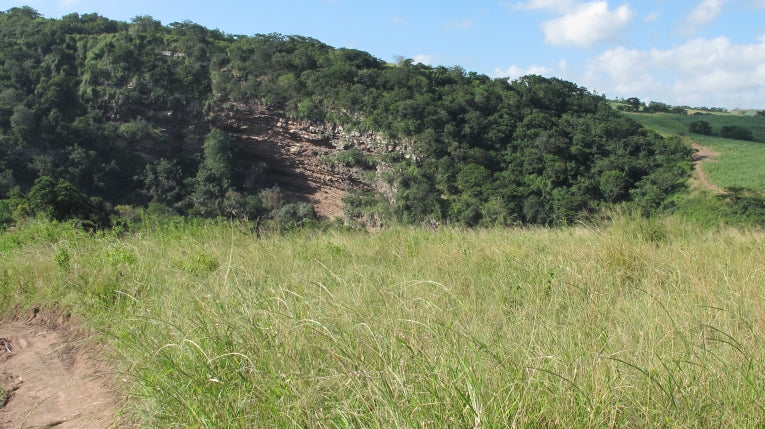Humans may have used plants to keep bugs at bay as far back as 77,000 years ago in the Stone Age, according to scientists. Sedge bedding containing leaves from the river wild-quince that repels insects has been discovered by a team of botanists, archaeologists and paleobotonists at an ancient Sibudu rock shelter in Northern KwaZulu-Natal, South Africa.
The river wild-quince was not only used to soften other material in the bedding, but to prevent mosquitoes, says the international team, led by Lyn Wadley, from the University of the Witwatersrand, Johannesburg. The find means such matting was used 50,000 years earlier than previously thought.
The honorary professor at the Institute for Human Evolution, says, "Since leaves can simply be used to add comfort to sedge bedding we were even more surprised when we discovered that the leaves used have insecticidal properties.
"For some insects there is a 'knock-down' effect. Others are repelled and the breeding rate is interfered with amongst some insects." Professor Wadley believes the Sibudu was used to combat mosquitoes from the nearby UThongathi River.
The team's findings have just been published in the Science journal. Botanist, Marion Bamford, from the Bernard Price Institute for Palaeontological Research at Witwatersrand, says the leaves came from the plant, Cryptocarya woodii, commonly called river wild-quince. C. woodii contains chemicals that deter insects and larvae.
"Domestic activities, like preparing and destroying plant bedding, can provide important information," said Professor Wadley and can reveal clues about demography and patterns of settlement.
The bedding, which measured up to three metres, would have been built from centimetre-thick layers of stems and leaves from sedges and rushes and placed on the floor. The Sibudu bedding could have been used both for sleeping and to work upon, as it still is in the area nowadays.
Leaf blade and vein patterns can be clearly seen in the fossilised leaves:

Researchers surmise plant sedges were used to repel mosquitoes from the Sibudu rock shelter site in South Africa, which is near the UThongathi River. This is an image of fossilized leaves found at the site; Credit: Lyn Wadley, Wits University
Researchers who have been excavating sites at Sibudu since 1998, have discovered at least 15 sendimental layers with plant bedding dating from 77,000-38,000 years ago.
C. woodii is in the same family as the Bay leaf, which can be used in cooking, but also preventing insect eating grain.
Boston University archaeological scientists Francesco Berna and Paul Goldberg studied extremely thin sections of sediment using methods that did not disrupt their integrity. The pair is supported by the National Science Foundation, an independent American federal agency that backs fundamental research and education in science and engineering.
They discovered evidence of various human activities, such as the building of bedding and hearths.
Paul Goldberg says, "I don't think we would have had this confirmation, or at least impetus, if we hadn't had done the original thin section work.
"We were able to recognize several different types of deposits that are only centimetres thick. Among them were layers composed mainly of phytoliths, some of which were clearly sedges," he said. "We could also observe in thin section some pieces of clay that was likely attached to the roots of the sedges from where they were taken down at the stream below the site."
Phytoliths are tiny mineral particles formed by a plant and fossilised.
The team, which included members from University of TÃ ¼bingen in Germany, also discovered evidence of the burning of plant bedding. It was like that "the bedding was burnt to rid it of pests - insects and perhaps rodents - and to clean up decaying organic material," said Professor Wadley.
"Since sites are usually simply abandoned when they become fusty, the implication is that people wanted to reuse Sibudu regularly, and more regularly than would be allowed by natural processes of decay to clean the site. Burning was probably a more effective way to get rid of insects than the use of herbs."
In future, the researchers' work at Sibudu may be stopped, as a large housing development is planned there. Professor Wadley hopes the discovery will show how important the site is and help preserve it.















